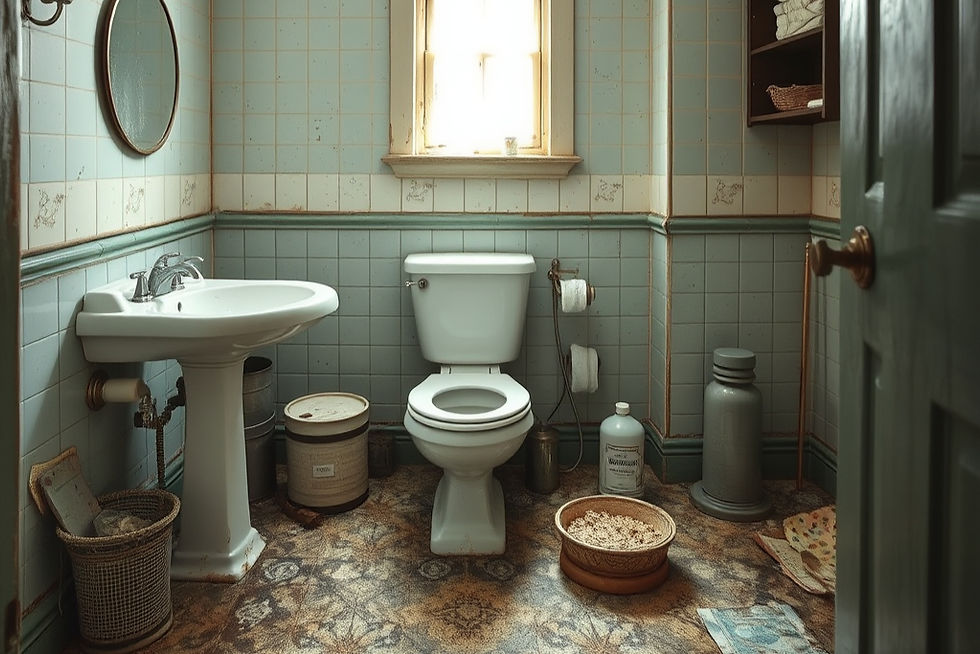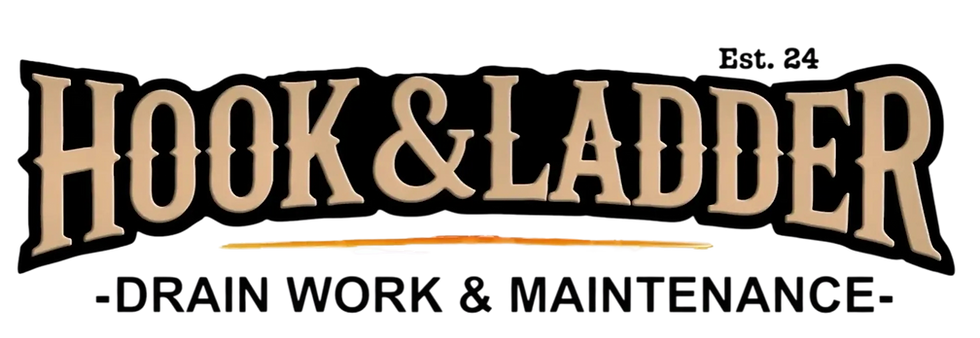The Financial Implications of Neglecting Your Toilet Upgrade
- Hook & Ladder

- Aug 21
- 4 min read
Updated: Oct 9
When was the last time you considered your toilet? For many homeowners, this essential fixture goes unnoticed, yet it significantly impacts our lives. A well-functioning toilet contributes to our comfort and hygiene. However, ignoring its maintenance or upgrade can lead to considerable financial drawbacks. In this post, we will explore the importance of modernizing your toilet and the potential costs you could face by putting off this vital home improvement.
The Importance of Upgrading Your Toilet
An outdated toilet can create various problems. These include leaks, clogs, and inefficient water usage. These issues not only cause inconvenience but can also lead to higher water bills and expensive repairs. According to the Environmental Protection Agency (EPA), older toilets can use between 3.5 to 7 gallons of water per flush. In contrast, modern low-flow toilets use only 1.6 gallons per flush.
By sticking with an older model, you could waste up to $500 a year on your water bill, depending on your usage. Additionally, a small leak can waste up to 90 gallons of water a day, which adds up to over 32,850 gallons a year—a staggering amount.
Understanding the Costs of an Outdated Toilet

Old toilets can create various problems, such as leaks, clogs, and inefficient water usage. These issues not only cause inconvenience but can also lead to higher water bills and expensive repairs. According to the Environmental Protection Agency (EPA), older toilets can use between 3.5 to 7 gallons of water per flush. In contrast, modern low-flow toilets use only 1.6 gallons per flush.
By sticking with an older model, you could waste up to $500 a year on your water bill, depending on your usage. Additionally, a small leak can waste up to 90 gallons of water a day, which adds up to over 32,850 gallons a year—a staggering amount.
The Hidden Costs of Toilet Repairs
All toilets eventually face wear and tear. Components like flappers, fill valves, and flush handles can fail over time, necessitating repairs. Each repair typically costs between $50 to $200, depending on the issue and regional plumber rates.
If you need repairs multiple times a year, the costs can escalate. According to industry standards, homeowners can expect to pay an average of $600 a year in repairs for malfunctioning toilets.
Instead of pouring money into frequent repairs, consider investing in a new toilet. Modern machines are generally more robust and efficient, which reduces the chances of needing repairs.
The Impact on Home Value
If you're planning to sell your home, an outdated toilet can be a significant drawback for potential buyers. Many use modern, efficient fixtures as a key criterion when house hunting.
An old toilet can negatively impact your home's overall appeal and market value. Real estate experts indicate that upgrading bathroom fixtures, including the toilet, can give you a return on investment of up to 70%. For example, if you invest $500 in a new toilet, it could potentially elevate your home's value by $350.
Environmental Considerations
Beyond financial implications, the environmental impact of an outdated toilet is notable. Older models consume significantly more water than their modern counterparts, leading to increased water waste.
By upgrading to a low-flow toilet, you can reduce your water use and lower your carbon footprint. Many local governments even offer rebates for homeowners who adopt water-efficient fixtures. These rebates can significantly mitigate the initial costs of installation.
Choosing the Right Toilet
When upgrading your toilet, consider a few crucial factors. First, think about which type best suits your needs:
One-piece toilets: Easier to clean and have a sleek appearance.
Two-piece toilets: Often more affordable and simpler to install.
Wall-mounted toilets: Save space and offer a modern look but may require more plumbing work.
Next, evaluate the flushing technology. Dual-flush toilets provide a low-flow flush for liquid waste and a full flush for solid waste, contributing to water efficiency. Look for toilets bearing the WaterSense label, which indicates they meet the EPA's water efficiency and performance standards.
The Long-Term Savings of a Toilet Upgrade
While the initial outlay for upgrading your toilet might seem high, the long-term savings can be significant.
By cutting down on water usage and decreasing repair needs, you can lower both your water bill and maintenance costs. Furthermore, investing in a new toilet enhances your bathroom's visual appeal, creating a more pleasant environment for you and your family.
Additional Benefits of Modern Toilets
Modern toilets offer more than just water efficiency. They often come with improved designs that enhance comfort. Features like ergonomic heights and quieter flushing mechanisms can make a big difference in your daily routine.
Moreover, many new toilets are designed with advanced materials that resist stains and odors. This means less time spent cleaning and more time enjoying your space.
Final Thoughts
Neglecting to upgrade your toilet can lead to substantial financial losses over time. From soaring water bills and repair costs to decreased home value, the risks of keeping an outdated toilet are clear.
Investing in a modern, efficient toilet not only saves you money but also reduces your environmental impact and enhances your home's marketability.
Don't wait for problems to arise—consider upgrading your toilet today to avoid the financial burdens of ignoring this crucial fixture. By making this simple yet impactful change, you'll reap the rewards of a functional and reliable toilet while safeguarding your finances in the future.
If you want to learn more about plumbing and drain cleaning, check out our services at Hook & Ladder. We keep your drains flowing smoothly and are here to help with any plumbing needs you may have!




Comments